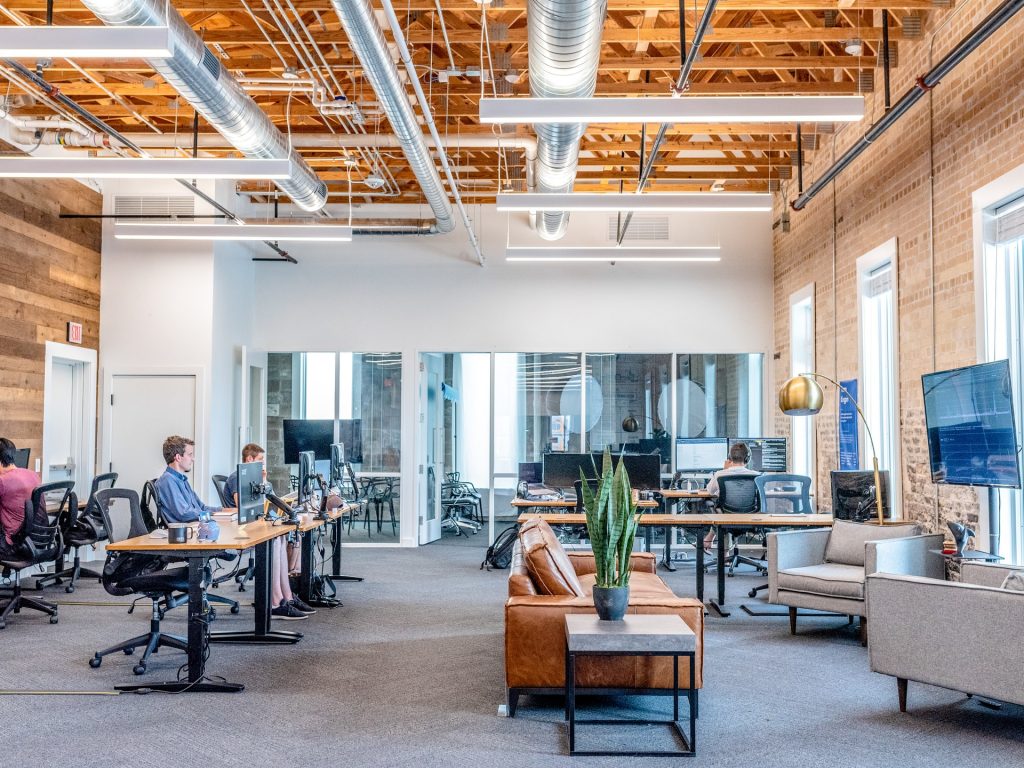The nature of the office.
Many business leaders thought that allowing employees to work from home would result in uncontrolled chaos. However, since the novel coronavirus (COVID-19) pandemic, the doubters have had to get used to the concept and, ultimately, they’ve had to accept it as a reality. It’s clear that, in the post-COVID-19 world, many companies will continue to allow staff to telecommute for the long term.
As many regions and states start to lift stay-at-home orders and gradually allow businesses to reopen, companies are slowly allowing predominately white-collar workers to return to office buildings, while weighing how much they really need the space they already had. That is the key challenge and consideration for almost all organizations when it comes to the design and layout of office spaces. Do organizations really need as much as space as they did before? Will their spaces be designed and configured different from how they were before?
Many of the world’s biggest companies—Facebook, Google and Twitter among them—have publicly stated that they plan to allow at least some of their workforce to continue to work from home at least some of the time, even after a COVID-19 vaccine is available and the health crisis is over. That could precipitate a significant downsizing of the office-real-estate market; that, in turn, would materially impact the urban centers and hamper restaurants, bars and retailers that rely on workers’ lunch and after-work spending.
So, with the genie already out of the bottle and a major shift to remote work, let’s ponder the question of whether organizations really need as much office space as they had before.
Analysis indicates that there will not be a wholesale abandonment of office space; quite to the contrary, additional office space could well be necessary in the short term to accommodate social-distancing requirements until a vaccine is available. And, over the long term, most companies likely will still want most workers in the office at least some of the time to promote collaboration and build team morale. Moreover, I would suggest that organizations that have office buildings have actually weathered the short-term effects of the pandemic far better than other commercial real-estate sectors have, and that’s precisely because insurance, finance and other professional-services employees can work from home, whereas frontline restaurant, retail and manufacturing workers cannot.
With that in mind, we can compare the “good old days” of only a few months ago—back when working from home meant quiet, solitude, no interruptions and serious focus time—to what we’re dealing with now. Before the pandemic, remote employees could plow through what seemed like a week’s worth of work in a day. Now, though, working from home has taken on an entirely new dynamic. Today, in many cases, it means a lack of focus, plenty of distractions, fear about the pandemic, being in close quarters with family members who are also working and learning from home, and all the general worry and anxiety that goes along with those things. Indeed, many of us have “little colleagues at home,” and they can be bored, antsy, needy colleagues who require our attention and invade our workspace. All of a sudden, in addition to doing our regular job, we’re also serving as chef, teacher, art director, therapist, IT support technician and negotiator.
So, although working from home is clearly going to be a much larger part of knowledge workers’ future, it certainly won’t be a panacea that benefits everyone, given those distractions and challenges. Many people will want to go back to their offices to escape the stressors they’ve experienced at home during the pandemic. We’re clearly approaching a hybrid future—one with a balance that blends components of remote work with components of travel to an office.
The post-COVID-19 office will likely not look the same as the pre-COVID-19 office did. For one thing, there’ll likely be fewer individual workstations—whether dedicated or shared—as much of that type of work can be done from home. Instead, there will be more open spaces for the kind of collaboration that isn’t easy to accomplish working remotely.
A typical office floor plan will likely include many more large conference rooms than we might have seen in the past, temporarily putting the brakes on the popularity of huddle rooms. In addition, although an organization might have fully AV equipped only a fraction of those conference rooms in the past, we can be confident that, now, every room will have to be able to collaborate with the larger numbers of remote workers. Also, these rooms will have to be smarter than they were in the past, utilizing low-touch or no-touch interfaces, having cameras that automatically track speakers and boasting sound systems that automatically filter out noise.
The office of the future will also be designed to support social gatherings: organizational successes, celebrations of colleagues’ achievements, work anniversaries, etc. That, too, will mean more large meeting spaces, dining spaces, atriums, etc. Essentially, the home desk will be for completing individual work with greater productivity (with the occasional need to join a group meeting via unified-communications tools); meanwhile, the office will be for gathering, brainstorming and building company culture.
The last few months have demonstrated that the advantages of incorporating remote work overcome the disadvantages of doing so. They have also shown that the office is not the only location where workers can be productive and contribute. We’re seeing a number of very high-profile companies whose executives are recommending that their employees remain remote workers. We will all have to accept and get used to developments like these.
The post-COVID-19 world will be a hybrid. Although companies all around the world should, and will, actively encourage remote work, the office is not dead. It is, however, going to look quite different.
To read more from Sound & Communications, click here.
